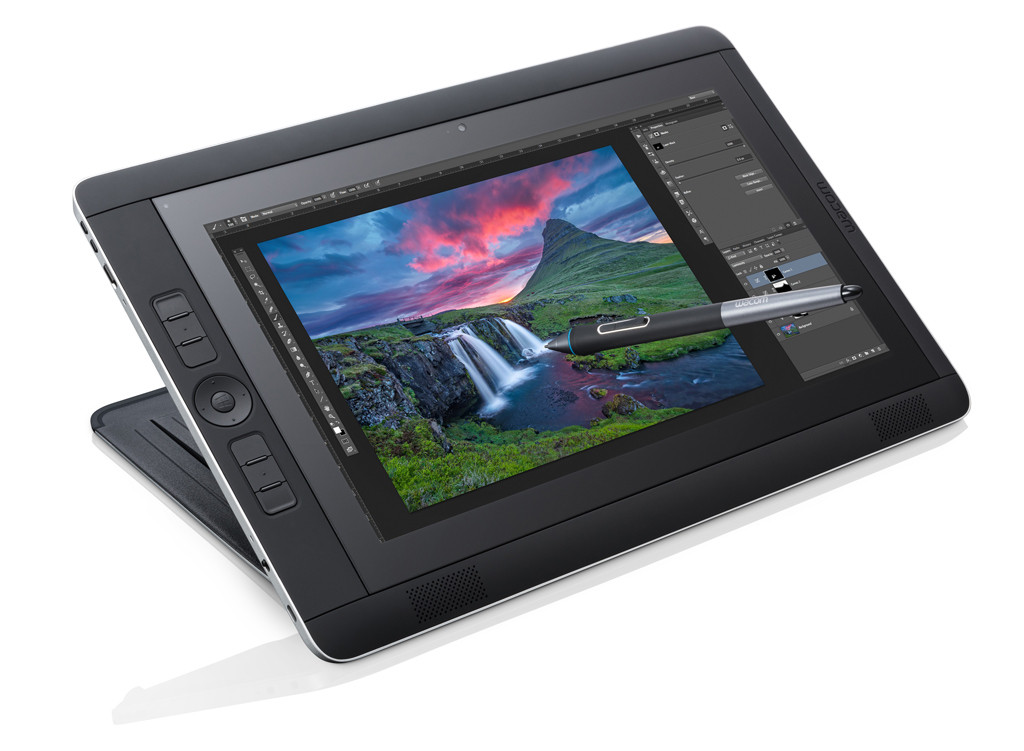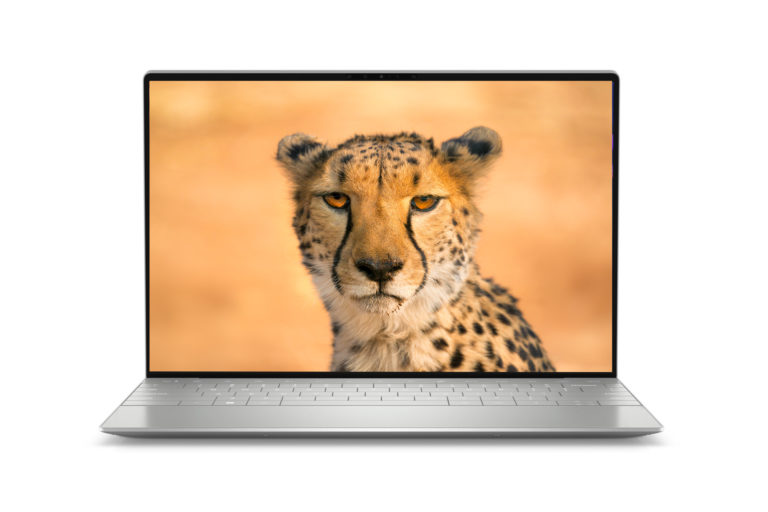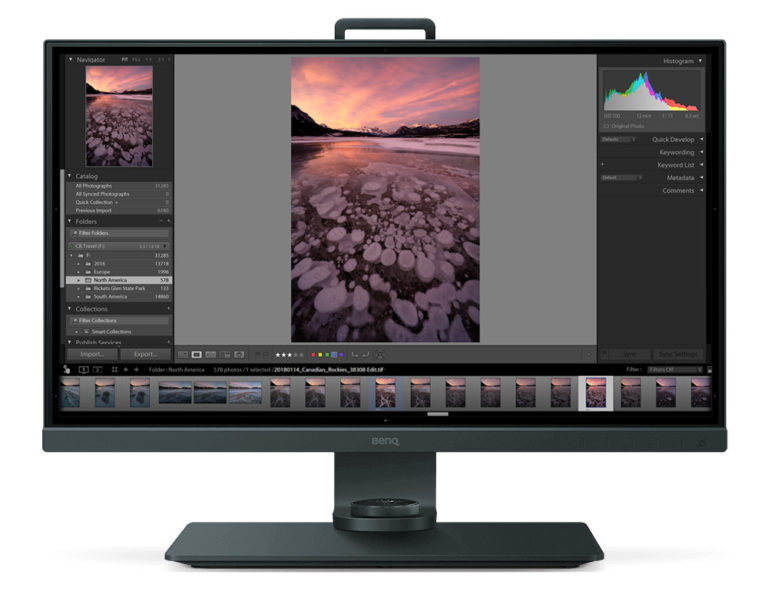At the CES (Consumer Electronics Show) in Las Vegas last week, Wacom announced the 13.3″ Cintiq Companion 2, which is essentially the 2nd generation in their line of powerful and portable tablets. Built with digital artists, photographers and graphic designers in mind, these devices not only come with a pen stylus and 2048 levels of pressure sensitivity, but they run full versions of Windows 8.1, allowing you to install and take full advantage of Adobe Lightroom, Photoshop, InDesign and any other application you can run on a Windows laptop or desktop machine.
While I will save my soap box talk on why a Wacom tablet (be it the their Cintiq, Intuos or Bamboo line) is easily the biggest game changer when it comes to post processing your images as a photographer for another blog post, the cliff note version is simply the power, efficiency and precision that a pen stylus provides is far beyond anything you can do with a mouse, which is in all honesty probably why most of you are here reading this review in the first place.

Now as a travel photographer, I spend much of my time on the road (generally 4-6 months out of the year) working on various projects, teaching workshops and creating marketing campaigns. For the past 12 months I have been almost exclusively using the 1st gen Wacom Cintiq Companion and have been generally pretty happy with the results. That being said, no device is perfect and there was certainly room for improvement.This is why I have been so excited to get my hands on the Companion 2.
Below you can see a short unboxing video I put together after Wacom first sent me the Companion 2 to test.
Specs
One of the interesting changes coming with the Companion 2 is the fact that it is now going to come in a variety of different models, at various different prices points to help you work with both your budget and your needs. The last generation had only two models, with the difference being the size of the internal SSD (256 or 512gb). Now you have various different builds with price points ranging from $1299 tp $2499 depending on how much of a beast of a machine you can handle!
Various Model Specs (Click to Enlarge)
Specs for All Versions
Whats New?
With each generation of a technology, improvements are bound to happen. This time around I have to say that all the changes from the 1st to the 2nd generation were on my request list.
- New Screen – In what used to be a 1080p 13.3″ screen, you now get 2.5k (2560 x 1440) of screen goodness. It is color accurate up to 73% Adobe 1998 & 96% SRGB. Overall the display just looks much better!
- New Power Button – The old power button could easily get turned on accidentally while being carried in the protective case, this can no longer happen as the new power button has a locking slide.
- Thicker Power Connection – The power connection on the Companion 1 was pretty small and could be considered delicate, the new power connector is much thicker and seems to fit more solidly inside the Companion 2.
- Front Facing Speakers – The speakers in the first generation Companion were not very good…in fact I rarely used them because I could never hear anything. The new speakers are not only much louder, they are facing the user, helping to amplify the sound you hear.
- USB 3.0 ports – Now all USB ports are USB 3.0 (You get three in total)
- More Express Keys – You now get 6 customization express keys, up from four from the 1st generation. These can be customized per application, so the same button can do different things depending on what application is currently active on your screen.
- SD Card Slot – With a full SD card slot, you can now easily backup/store/offload your images off of SD cards directly onto the tablet…no more need for a card reader…atleast with my Sony full frame mirrorless cameras 😉
- Input Display – You can now finally use the Companion as a secondary display (works on both Windows and Apple computers). Historically you could use the device to power other displays, but now it can be used in addition to your current computer setup as a secondary Cintiq display (with full pressure sensitivity). This is probably the most sought after requested feature of this the new generation of Companions.

Build/Portability
One of the first things that 1st generation Companion users will notice is that the Companion 2 is noticeable thinner and lighter (3.75lbs vs 3.9lbs). That might not sound like alot, but the tablet itself feels much better in your hands. Maybe the weight is simply balanced more equally. This is a very welcomed change as the tablet as a whole is a good amount heavier and bigger than your average ultra-book, even with a 13″ screen. When you add the bezels and extra space needed for the express keys, the 13″ is much closer to a 15″ laptop in reality. Regardless, this is one portable and powerful machine. Historically if I wanted the same performance and functionality, I would have to bring a top end laptop (usually an Ultrabook to save on weight) and a Wacom Intuos tablet. Combined they would take up more space and weight than the 3.75lbs of the Companion 2. This also helps when using the device in cramped spaces, such as on an airplane.

The tablet itself is built incredible well, much like the first generation. The express keys feel even more solid than the 1st generation and the volume up and down keys have also improved. As I mentioned above, we now have front facing speakers, which makes all the difference in the world when it comes to actually being able to hear the speaker this time around. Lastly the screen is gorgeous. It still does have that protective layer of film on top (protecting it against any marks from the pen stylus) but now you have a 2.5k QHD screen that is pretty awesome. My only gripe is that it could be a touch brighter, making it easier to use in bright sunlight…although the truth is that I don’t see myself using this device in that situation all that often. I also noticed a tiny amount of light leak coming from the LCD just below the bottom bezel, but it was a very small amount and only really appeared when booting up Windows 8 (with those dark screens).
Performance
While I have truly enjoyed using the 1st generation of the Cintiq Companion for the past year, the truth is that I was always looking for a bit better performance. As a photographer I mostly use Adobe Lightroom or Photoshop and while both handled basic to mid level tasks well, I would certainly start to feel its limitations when trying to edit large MP images or doing more advanced editing tasks in PS, such as large panorama stitching. Now that I have used the Companion 2 for the last few weeks, I can say without a doubt that that this is a more powerful device. Although to be clear, the version that I have been using is a pre-production “Premium” Cintiq Companion 2 ( i7 4558u processors, 256gb HD, 8gb RAM and Intel 5100 graphics card).

Statistically speaking the i7 4558u processor is roughly 12-15% faster than the i7-3517u found in the original. I was also told that while the my Companion 2 had 8gb of RAM just like the Companion 1, this time it was running in dual channel mode, which a Wacom rep tried to tell me felt like it was running with 12gb of RAM. Regardless of how true that is, programs did load faster and performance was better across the board. It was so good in fact that I was able to use it as my only machine for a week while I wrapped up a marketing project filming the build of a new custom PC for one of my sponsors.
While processors and RAM certainly play a role in performance, SSD technology has been one of the most important technology upgrades in recent computing history to help improve performence. If any of you have moved from a standard HD to an SSD for your main hard drive, you know what I mean. I benchmarked the SSD found on the Premium version of the Companion 2 and got the following speeds: Read: 508.98 MB/s Write: 247.34 MB/s. These scores are pretty good, although that write speed is a touch lower than expected (I re-ran the tests and got 398 MB/s for write scores). Interestingly enough, when I tested the 256gb HD vs the 500gb HD in the Companion 2, I noticed that the 500gb HD’s have faster write speeds (443 MB/s vs 398 MB/s)…essentially the smaller HD’s just don’t write as fast.
For comparison, my main Desktop at home has a Samsung 840 Pro SSD in it and gets the following speeds: Read: 557 MB/s | Write: 459 MB/s.

When it comes to battery life, the Companion 2 works just about as advertised (which is similar to the Companion 1). These powerful devices pull allot of juice and so you can expect between 4.5 to 5.5 hrs of use. I would love to see 10+ hours, but I feel we have to wait for both better battery technology as well as more power efficient CPUs. Until then you can adjust the “Power” modes on your Companion 2 between Power Saver, Balanced and High Performance, each adjusting screen brightness and CPU strength to help control power consumption.
This being said, I am really looking forward to the “Enhanced” version of the Companion 2 (as well as the “Enterprise” model). This will not only come with 16gb of RAM, but the brand new Intel Brodwell i7-5557u processor that will not only bring a solid performance increase of the current Haswell processors, but also be up to 20% more power efficient. I will update my review after I get a chance to play with one of these bad boys.
Screenshots
Here are a number of screenshots of the Companion 2 running various applications as well as CPUz information (a popular PC information application) about the device itself. (Click on each image for full 2.5k goodness)











Final Thoughts
When Wacom first announced the Cintiq Companion, I was excited to finally have a device that could do the duty of multiple other devices that I typically took with me when working from the road, namely a laptop and a Wacom stylus + tablet. For a 1st generation product, the original Companion did a solid job even if it had a few short comings. With the second generation it truly seems that Wacom has been listening to its customers. With the Companion 2 you not only have a much higher resolution screen, an input display port, more express keys and front facing speakers…but also custom purchasing options that change the price based on the CPU, RAM, Graphics Card and SSD size. This will help make the Companion 2 more affordable (a gripe about the 1st generation model) to a wider audience. If you want the top end model and have $2500 to shell out, you have that option, however if you just want to use the Companion 2 as a secondary display with an option to move your editing to the couch on occasion, you can pick up lowest end model at $1299.


Another interesting point is that many of you are probably Apple users and are probably hesitant to think about picking up a Windows machine. While I could easily tell you that Windows 8 is actually very stable, fast and efficient (essentially on par with OSX) and that there are applications to help you work with HFS+ and NTFS file systems, you still might not be convinced. Well if that is the case, you should know that I have heard a rumor from a very reliable source that you could theoretically get OSX running on the Companion 2, other wise known as creating a “Hackintosh”. If you don’t know what that is or how to do it…start with a Google search 🙂 *just be aware that this would void your warranty…

So do I recommend the Companion 2? I think the fact that I am already planing on stowing it in my messenger bag any time I leave the house should tell you enough. For you the only challenge will be to simply figure out which version works best for both your budget and your needs. That and of course waiting for the Companion 2 to actually go on sale, which should happen in March or April of this year, 2015. If you have any questions…please leave them in the comments below!
Full Disclosure
If you look on the right hand sidebar of this blog you will see the Wacom logo over there. That is because they are a sponsor of mine…which is how I got early access to the Companion 2. That being said, I would like to think that most of you are internet savvy enough to know that my integrity is worth far more than any relationship I have with any company I work with. It is simply too easy for any of you to find out if I wasn’t being honest with this review. These thoughts, both the good and the bad, are my own. Wacom didn’t ask nor pay me to write anything you see here.











